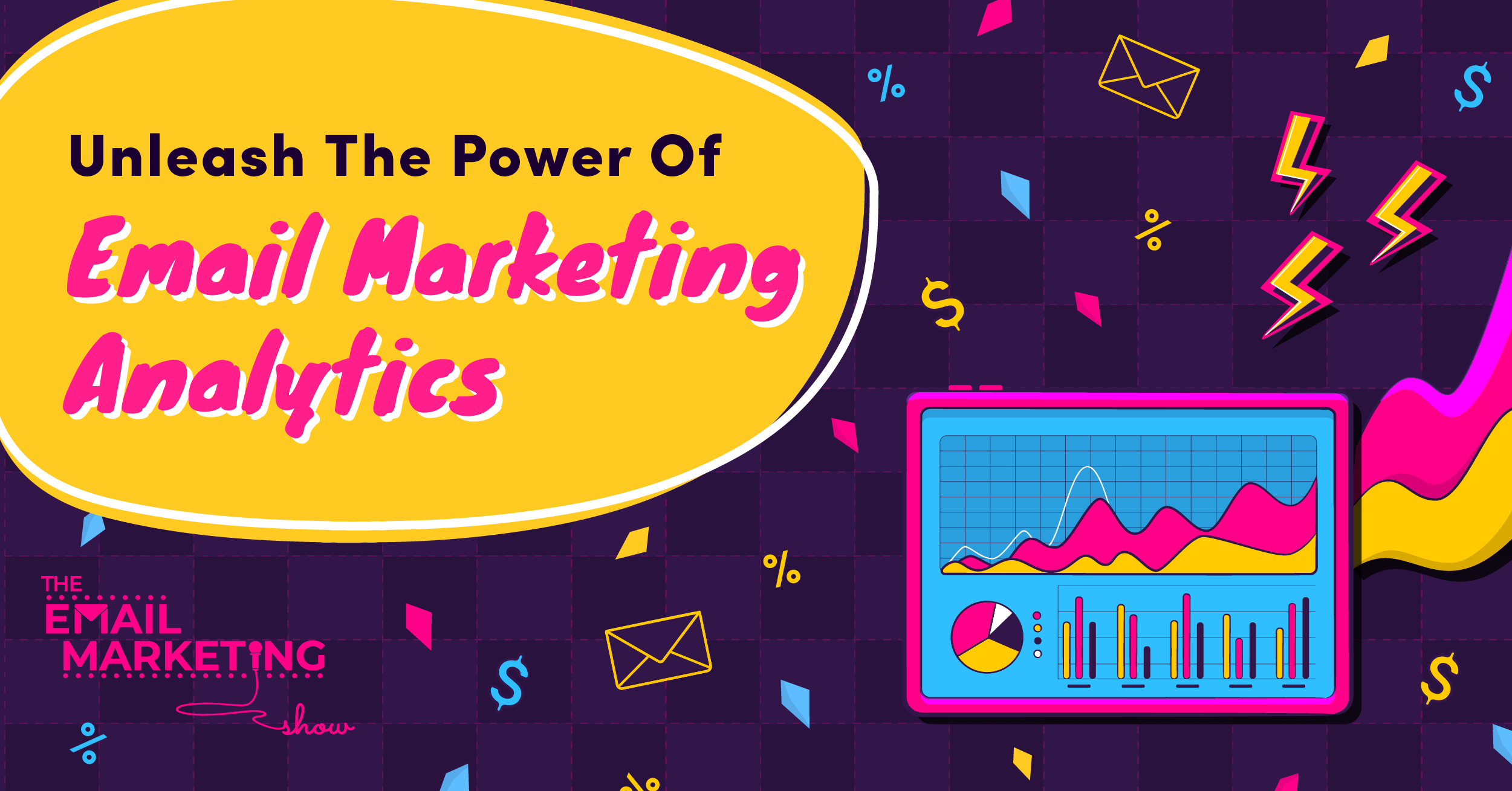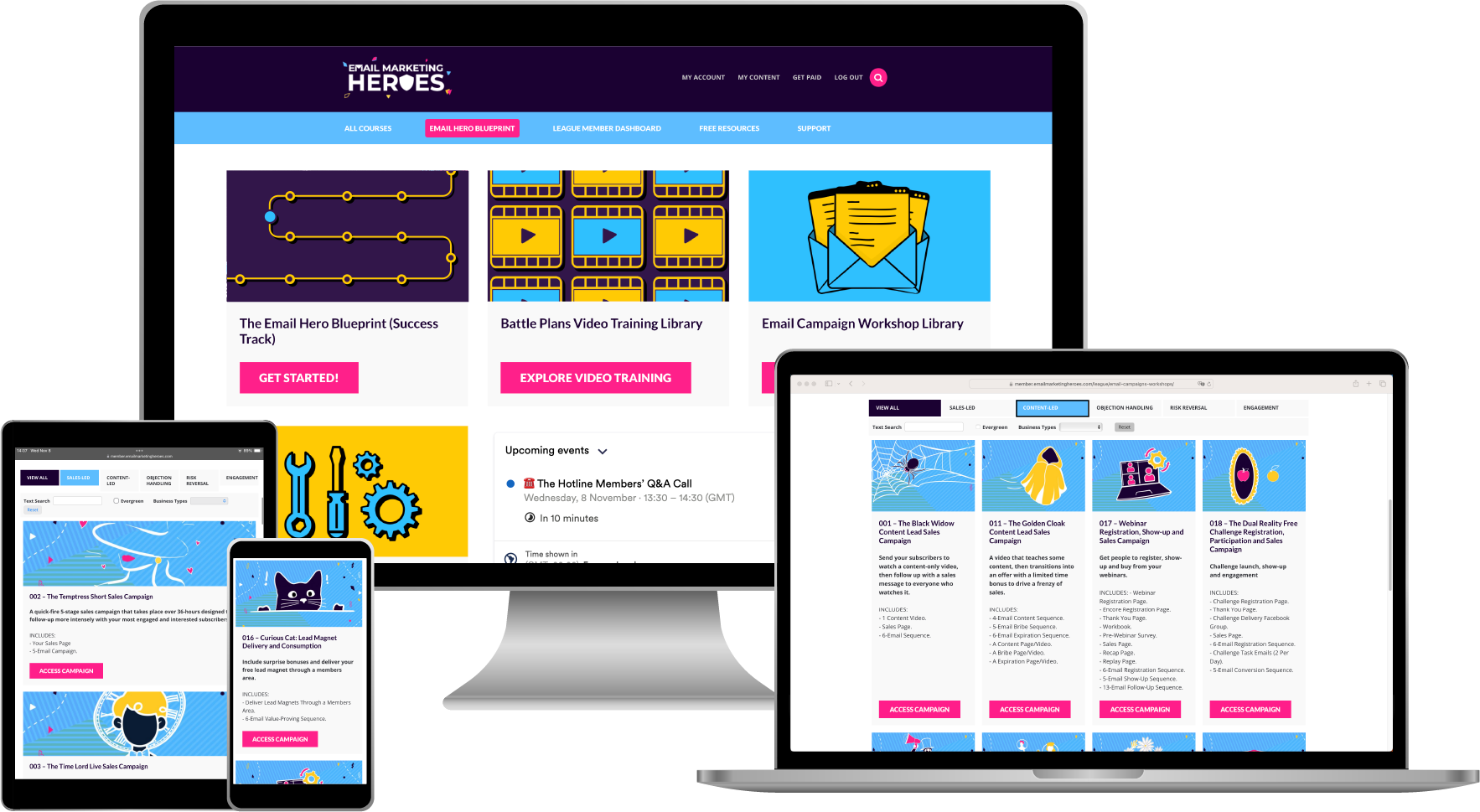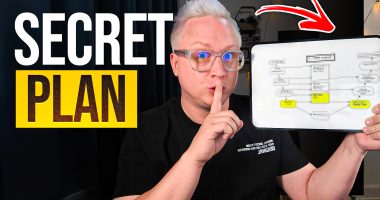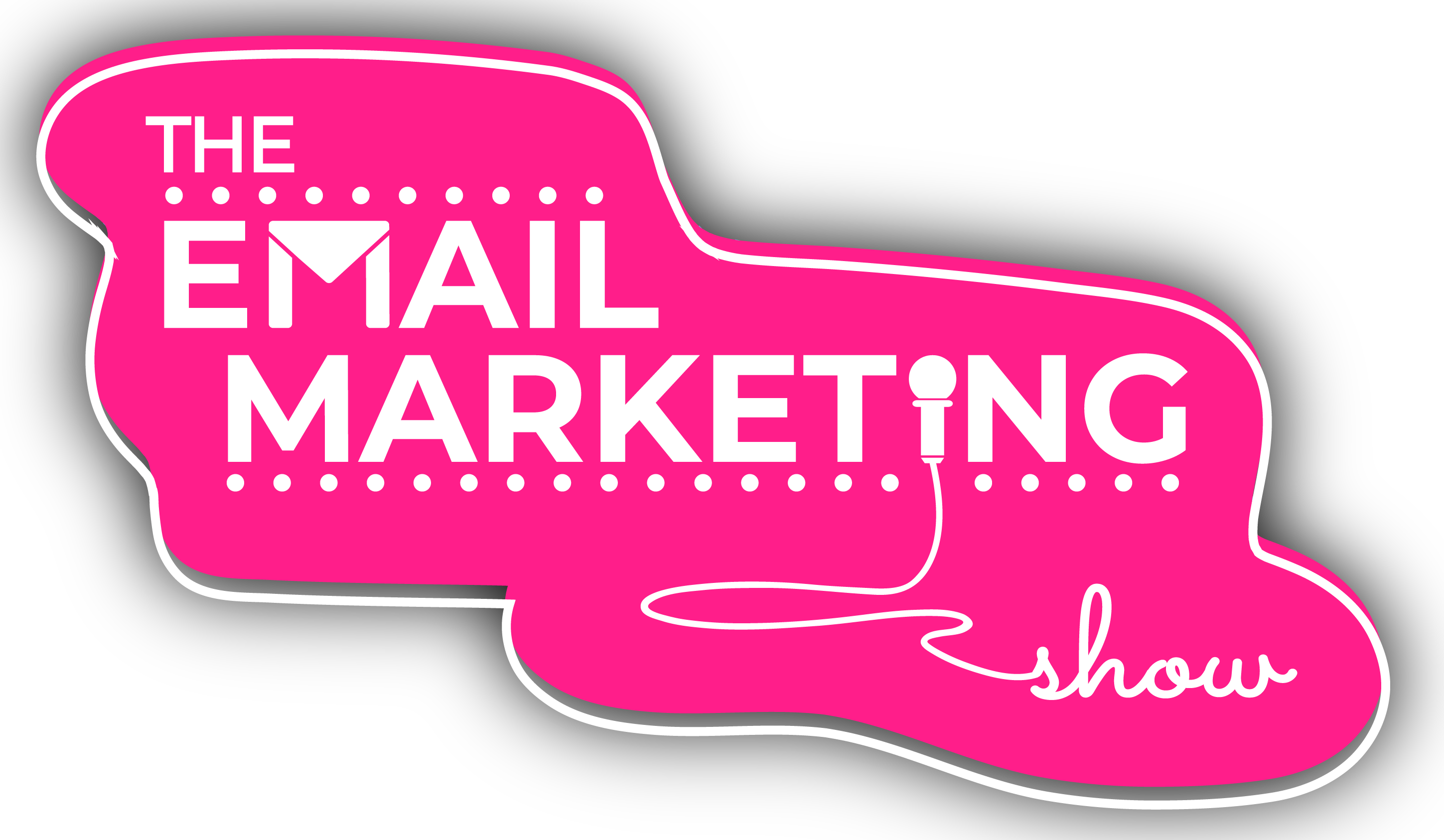
Master Your Metrics – Unleashing The Power Of Email Marketing Analytics
Do you track any email marketing metrics? How can you use your email marketing analytics to improve your email marketing?
If this is a topic you've been avoiding, the great news is that looking at metrics, understanding them, and using them to your advantage isn't as hard as it might sound. Just collect the right data, and you'll be able to spot opportunities for improvement and growth. And yes, that means more money!
So let's get into it.
SOME EPISODE HIGHLIGHTS: (0:19) Join our FREE Facebook group. (2:59) Why do email marketing analytics matter? (4:18) What email marketing metrics should you look at? (7:59) What can you do if your open rates are low? (11:55) The truth about your click-through rates. (13:25) How to increase your click-through rates? (20:51) What can you do when your conversion rate is low? (25:12) What can you do when your unsubscribe rate is high? (30:15) How can you use your email marketing analytics data? (32:44) Why you should always calculate your EPSPM. (35:46) Subject lines of the week.
Why do email marketing analytics matter?
Email analytics help you figure out where the biggest levers and opportunities for your email marketing are. When you look at the right metrics, you can get more from your emails. Plus, the analytics you need to track and understand aren’t that complicated and can (mostly) be found inside your email marketing platform.
You probably think that one of the biggest metrics we suggest you track is the growth of your email list. And while that’s something you should look at, other metrics will tell you whether you have a well-refined engine that’s working for you. By knowing which email campaigns are doing well, you'll find out where you have room for improvement.
What email marketing metrics should you look at?
Open rates
If you find that one specific email in one of your campaigns has a zero open rate, you’ll want to look at that. As we always say, open rates aren’t reliable, as such. But they’re still a good indicator in comparison to each other.
So if you see a surprisingly low open rate one day or on one specific email, you may want to investigate. Could it be the timing? Or the subject line? This matters because if no one opens an email, it means they haven’t seen the link to your offers. In other words, if no one opens your emails, you won't be able to influence your click-through rate.
Click-through rate
Click-through rates are shown as the percentage of people who’ve clicked on your links based on how many people you sent the email to.
They used to be shown as a percentage of the people who opened the email, which isn't great and something systems have moved away from. This is because the way open rates are tracked is broken. So it’s best to look at the percentage of people who clicked on your links based on how many people you sent the emails to. Email platforms have switched to this method of tracking, so if you’ve recently seen your click-through rates drop through the floor, that’s probably why – the way they're being tracked has changed. But that's a good thing!
Conversion rate
Another metric you want to track is your conversion rate. How many people took action as a result of you sending an email? When we talk about ‘taking action', that could mean buying your product but also registering for a webinar, for example. It's about whatever action you're asking your subscribers to take in that email.
Bounce rate and unsubscribe rate
You'll also want to track your bounce rate, which looks at how many email addresses weren't deliverable.
And finally, you want to track your unsubscribe rate. Every time you send an email, some people will unsubscribe – that's just a fact. That’s the cost of your email marketing but also the reason why there should always be some kind of offer in every email you send.
Tracking your email marketing analytics
If you’re inside our membership The League, you’ll know we have a piece of training that takes you through how to track your email analytics in great detail. So once you set up any email campaign, you can take a look at the open rate, click-through rate, and conversion rate of each campaign and, overall, at the bounce rate and unsubscribe rate of your email marketing.
This means you then have levers that you can start pulling on to improve your email marketing. So let's look at each metric in more detail.
What can you do if your open rates are low?
If you have a low open rate (10-30%) on one of the emails inside a campaign, it could be that the subject line needs tweaking. Otherwise, you should be looking at your engagement.
A lot of our clients, when they first come into our world, may have massive email lists, but they'll tell us they've never done any engagement management. Once someone subscribes to their list, unless they leave of their own accord, no action is being taken by the list owner to keep an eye on who’s opening the emails, who’s clicking on the links, or who’s doing anything.
Are you implementing good email list hygiene?
Ordinarily, what we see when people join our programme and start implementing our campaigns is that the frequency of their emails increases. And the first thing we advise our clients to look at is who is likely to open those emails.
If you have a list of 10,000 people and 1,000 of them open an email you send, you have a 10% open rate. But if only 5,000 of the people in your list are even using their email addresses (because all the others aren't valid anymore), you’re only really sending your emails to 5,000 people – not 10,000. The others are dead emails, spam traps, or people who no longer engage with you.
This is why it’s important to look at your business and let go of this vanity metric of how many subscribers you have on your list. It only matters if you take the time to regularly try and revive or re-engage the people who aren’t paying attention and then delete them if they don’t re-engage with you. Deleting people might sound painful, but it’s the best possible thing for the hygiene of your list. Once you start doing that, you’ll see your click-through rate go up, and you'll be able to get your list to a point where your subscribers are people who care.
The truth about your click-through rates
What happens if your open rates are good, but people aren’t clicking on the links to your offers? Typically, when you first present an offer, you’re going to see a higher click-through rate compared to the people who've gone through an entire email campaign that talks about your core offer.
Over time, people will click on different versions of that offer, and the click-through rate will improve. Then in your day-to-day email marketing (i.e. the email you send live each day), you’re going to see a lower click-through rate when talking about that same offer.
That's because the whole point of the longer-term relationship-building you’re doing with your daily emails is about waiting for the right time for people to want to buy your product. If they had an urgent need for it, they would have bought it during the first 60 days of you emailing them through your campaigns. Because that’s what those campaigns are designed to do.
The reason why people haven’t bought from you yet is that it’s not yet the right time for them. So you can expect a lower click-through rate, which, of course, means a lower conversion rate too.
How do you increase your click-through rates?
If you want people to click on the links in your emails, make them really obvious that there's something to click on. Spell out “Click here to do X” – no matter what action you want your subscribers to take. Let people know they can click and make sure that your links look like links (i.e. blue and underlined).
To make them stand out even more, you can even put them on a separate line. If your click-through rate is super low, you could use the most obnoxious-looking link for a few weeks to make sure people see it. You could even temporarily add some chevron arrows in front of it and put it all in capital letters. Once you know people are seeing it and are clicking on it, you can then dial things down again and remove all the extra bits.
We’re literally obsessed with getting people to click on the links in our emails, which is why we put together a resource called Click Tricks, which you can get for FREE. It includes 12 creative ways of drawing attention to the links in your email so people don't scroll past them. We did some testing a couple of years ago, and we found situations where a lower open rate could still lead to a higher click-through rate because of what the links in your emails look like. So we know it works!
Why you want to increase your click-through rate and not your open rate
Think about sales calls. You're better off having fewer calls but with higher-qualified leads than lots of calls with people who aren't necessarily interested. You'll get more people buying that way. Having loads of sales calls with just anyone and everyone isn't as effective because it ‘waters down' your sales process. The same thing applies to email marketing – you can get fewer but more qualified people opening your emails, and those will be the people who click on your emails.
The idea that if you have a bigger list you’ll get more opens and more clicks (and therefore more sales) isn’t necessarily true. What you’re looking for is the highest click-through rate, which might not come from having more subscribers or from having a high open rate.
There are lots of things you can do to increase your open rates (including using dodgy subject lines). But that doesn’t mean you’re going to get more sales. Instead, use subject lines that help you optimise the opening of the email and the clicking of the link so that, over time, you get the right pool of people. The more emails you send, the better you'll notice you become at this.
The impact of subject lines on your click-through rate
Your subject lines can affect your open rate, and, in turn, that can influence your click-through rate. It's worth thinking about the level of intent of the people you’re sending emails to. Most campaigns are going to have subject lines that are suitable for people at the bottom of the funnel, which is the point where you’re telling them your programme is closing soon, for example.
These aren’t the emails where you use obscure subject lines where people need to open the email to find out your offer is closing. You'll want to tell them straight up in the subject line! We call these ‘label on the box' subject lines – it tells you what's in it.
There will be times when a subject line needs to help you with an outcome. But then you’ll have other types of subject lines that are more ‘obscure’ – those that use compound curiosity, for example, and say exactly what's inside the email. That way, people need to open and read the email to find out. And those are the subject lines that help you increase the open rates of your emails.
What can you do when your conversion rate is low?
If you’re doing a good job of optimising open rates and click-through rates, but your conversion isn’t great, it’s probably nothing to do with your emails. Often, this has more to do with your offer. Maybe you have the wrong people on your list. Or maybe your offer isn’t good or is poorly presented. Perhaps it’s not conveying the value and the transformation it can deliver.
If you’ve taken something super bland, put it on sale, and expect email marketing to work wonders for it, it won't happen. If you use your emails hoping to get massive click-through rates for something that’s ultimately rubbish, you won't convert. So you need to go back to the start. Have you got the right people on your list? Are they opening your emails? Are they clicking on your links?
If you do, and the page isn’t converting, you’re probably not sending enough people to it. We recently noticed one of our clients who was offering a $6,000 programme telling us they only had 60 people on their list. While we always say the size of your list doesn't really matter, when you do the maths, even if you had one person on a list of 60 people buying a high-ticket price product, you’d be doing better email marketing than most people! In reality, in that case, you need more people on your list.
You also need to look at your list hygiene. Are the email addresses on your list still active? Because you need a real human behind those email addresses who opens and engages with them. It's all about engagement monitoring and launching re-engagement campaigns when necessary. Don't forget that! If people aren’t engaging with your emails in a period of 60 days, put them through a revival sequence and give them one last chance to engage. If they don’t, unsubscribe them from your list.
What to do when your unsubscribe rate is high?
Every time you send an email, you'll have some people unsubscribe from your list. That's just going to happen. In our welcome sequence (the Getting to Know You sequence) we tell people we’re going to email them every day with something that’s going to help them with their email marketing. But if that’s not for them, the door is always open, and they can leave (unsubscribe) at any time.
We see a lot of email marketers who are worried about sending emails because they don’t want their subscribers to leave. And massive amounts of unsubscribes all in one go aren’t good for anyone. It’s not good for you, and it’s not good for your email marketing platform. We know that. When people join our list, for example, we have the biggest spikes of unsubscribes in the first 5 days. Then the unsubscribe rate remains quite low over time, just to spike up again when we have a big influx of email marketing activity. But that's fine and to be expected. What matters is that the people who choose to say, do so for a long time.
How are people joining your list?
If your unsubscribe rate is generally high, and a lot of people on your list tend to leave immediately or very quickly, it’s worth looking at where the people are coming from. What’s the intention with which people join your email list? Because we can’t rely on tricking people to join – we can’t promise them something, and then give them something else. We know that some activities for acquiring new people on your email list notoriously drive high unsubscribe rates.
For example, if different businesses get together and put their products into a bundle that’s advertised together, you’ll have people who opt in because they’re interested in one or more of the products. But because they don’t have a relationship with you directly, you might have a high unsubscribe rate when you start emailing them. And this might be okay for you if you know why it’s happening. You’ll expect a big exodus of people during the first few weeks after that event, but as long as you get good sales and a return on investments, you may be fine with that.
Not all methods of bringing people onto your list are created equal. If you’re running cold traffic via ads to your lead magnet and never mention that you’re going to continue emailing people, you’re going to have a high unsubscribe rate. On the other hand, if you do a guest training or run an event, and people join your list because they loved what you delivered and want more of it, you’re going to have a lower unsubscribe rate.
Your unsubscribe rate is going to change depending on the source where people came from. Just monitor the net outcome of each activity. You might be okay with a huge unsubscribe percentage from a certain lead source if you understand why that's happening.

The Top 10 Books To 'Power Up' Your Email Marketing
10 book recommendations that will improve all areas of your email marketing (including some underground treasures that we stumbled upon which have been game-changing for us).
How can you use your email marketing analytics data?
Whenever you build and run a new campaign to your email list for the first time, you may be tempted to check your sales. But you can (and should) look at your email marketing analytics too. What were the:
- Open rate.
- Click-through rate.
- Conversation rate
- And the unsubscribe rate for that campaign?
When you then automate that campaign, you’ll have some initial data to look at. And we suggest you put a process in place to check the data every 90 days and compare it. Did you notice any changes? Is there anything you think you can improve or fix? Maybe you can tweak the hook of an email or the angle of an offer. Most of the time, you won’t have to change anything, but sometimes you'll spot things that no longer work.
This is also super helpful if your business has changed. It’s always good to check your automated campaigns from time to time in case you’ve changed your offers or the products or services you sell. Your email marketing analytics and metrics help you make your future campaigns better. You’ll have the quantitative data that tells you what needs tweaking. Over time, you’ll also get better at this and will develop a natural hunch as to what’s going to work better.
Why you should always calculate your EPSPM
Finally, the North Star metric that we always use is the EPSPM, which is your Earnings per Subscriber per Month. It tells you how much you're earning from your list every single month. You calculate it by dividing the amount of money you’ve made in that month by the number of subscribers you have on your list in the same period.
Over time, tracking your EPSPM will show you a trend and tell you exactly how your email marketing is doing. When your EPSPM is increasing, it means you’re getting better at putting things in front of your email subscribers. It doesn’t matter how big your list gets because as long as you check this metric, you’re getting consistent data. And that helps you understand how your email marketing is doing. For us, this is the number that puts all the other email marketing metrics together.
Subject line of the week
This week’s subject line is “My humiliating webcam mishap.” This is a subject line where people immediately paint a picture in their heads. It takes only seconds for the mind of a grown adult to guess what might have happened. Sure, everyone's version of it will be a little different, but they'll want to open the email to find out what happened. So check it out!
Useful Episode Resources
Related episodes
Advanced Psychology: Using Compound Curiosity.
How To Audit Your Email Marketing.
How To Create THE Most Successful Re-Engagement Email Campaign (And Smash Your Sales Targets).
FREE list to improve your email marketing
If you want to write better emails, come up with better content, and move your readers to click and buy, here's how. We put together this list of our Top 10 most highly recommended books that will improve all areas of your email marketing (including some underground treasures that we happened upon, which have been game-changing for us). Grab your FREE list here.
Join our FREE Facebook group
If you want to chat about how you can maximise the value of your email list and make more money from every subscriber, we can help! We know your business is different, so come and hang out in our FREE Facebook group, the Email Marketing Show Community for Course Creators and Coaches. We share a lot of training and resources, and you can talk about what you're up to.
Try ResponseSuite for $1
This week's episode is sponsored by ResponseSuite.com, the survey quiz and application form tool that we created specifically for small businesses like you to integrate with your marketing systems to segment your subscribers and make more sales. Try it out for 14 days for just $1.
Join The League Membership
Not sick of us yet? Every day we hang out in our amazing community of Email Marketing Heroes. We share all of our training and campaigns and a whole bunch of other stuff. If you're looking to learn how to use psychology-driven marketing to level up your email campaigns, come and check out The League Membership. It's the number one place to hang out and grow your email marketing. Best news yet? You can apply everything we talk about in this show.
Subscribe and review The Email Marketing Show podcast
Thanks so much for tuning into the podcast! If you enjoyed this episode (all about which email marketing analytics you should track and how to use them to improve your email marketing) and love the show, we'd really appreciate you subscribing and leaving us a review of the show on your favourite podcast player.
Not only does it let us know you're out there listening, but your feedback helps us to keep creating the most useful episodes so more awesome people like you can discover the podcast.
And please do tell us! If you don't spend time on email marketing, what do you really fill your working days with? We'd love to know!






